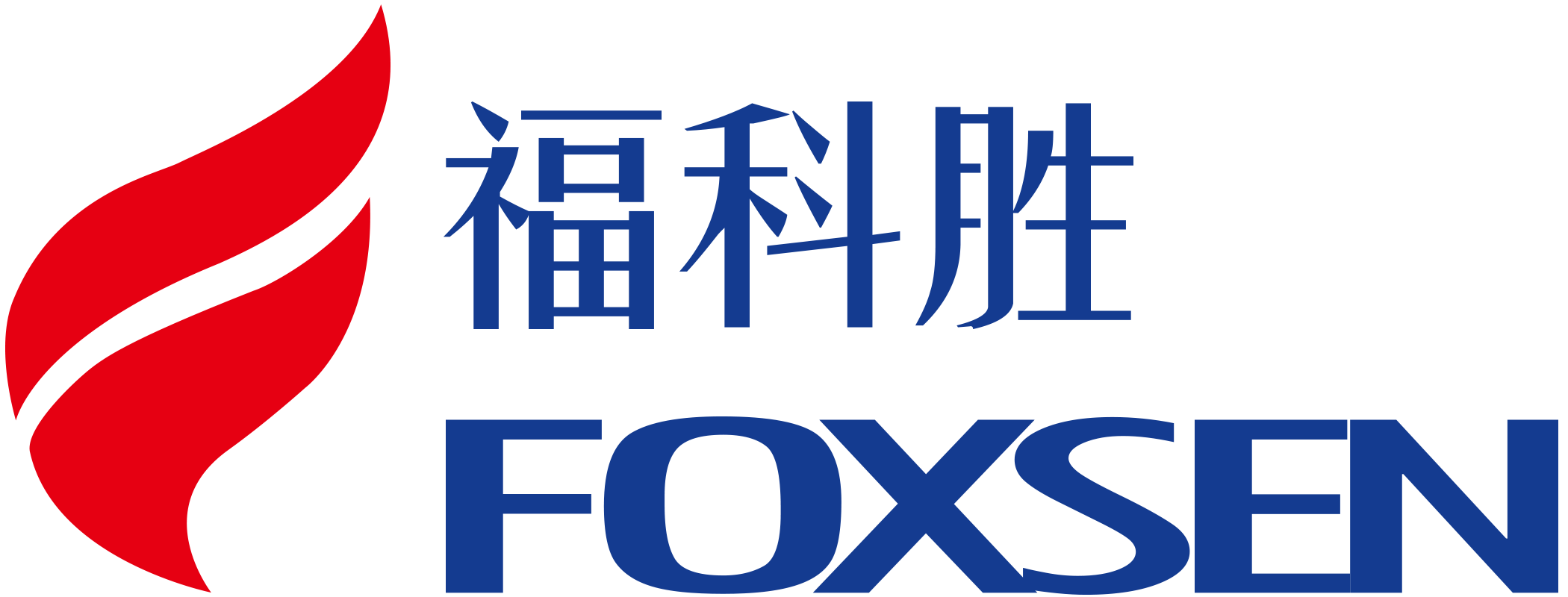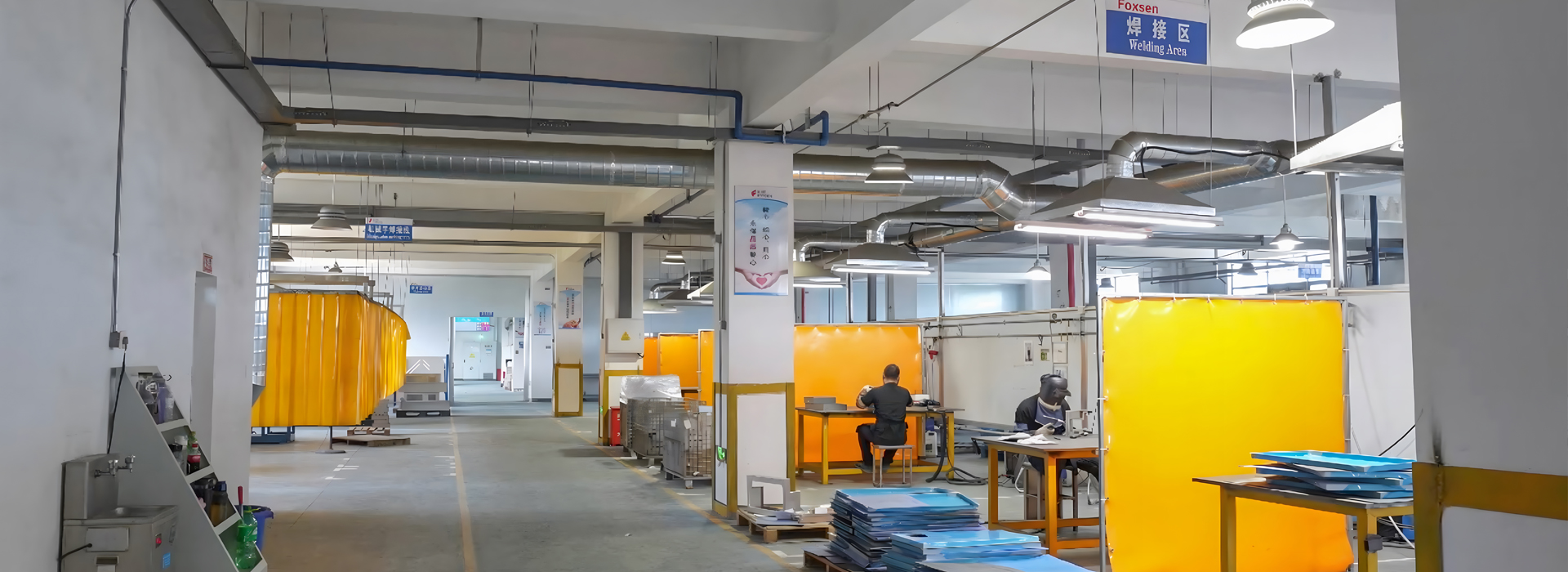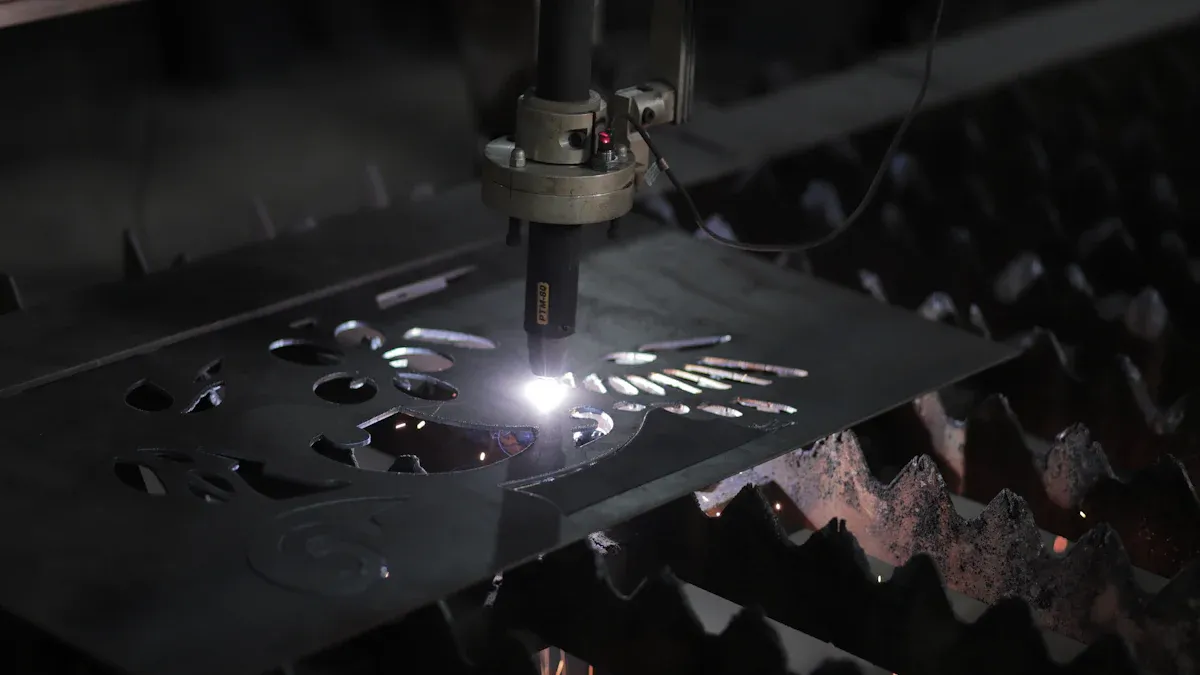Laser cutting, particularly in the context of sheet metal laser cutting, has many great benefits for shaping sheet metal. It cuts with high accuracy, even for detailed designs, and reduces waste. For instance, using fiber lasers can lower energy costs by 40% when cutting thin stainless steel compared to plasma cutting. This method also works well on materials like ZINCALUME and ZINCANNEAL, cutting thicknesses of 0.5–1.0 mm efficiently. Plus, it cuts GALVABOND about 20% faster in similar situations. These advantages make sheet metal laser cutting important for creating quality designs that save money and help the environment.
Key Takeaways
Laser cutting is very precise, with tiny errors of ±0.03 mm. It makes detailed designs accurate and reliable.
This process saves material by cutting exactly what is needed. This lowers costs and helps the environment.
Laser cutting works with many materials and thicknesses. It is used in industries like airplanes, cars, and art.
Automation in laser cutting makes work faster and more accurate. It reduces mistakes and keeps quality high.
Using CAD software with laser cutting improves design and saves material. This leads to better results and quicker projects.
High Precision and Reduced Waste
Achieving Unmatched Precision with Sheet Metal Laser Cutting
Laser cutting is very precise, making it great for shaping sheet metal. It can cut with tolerances as small as ±0.03 mm per meter. This ensures accurate results, even for complex designs. Tools like micrometers and Vernier calipers check the accuracy of cuts. Micrometers measure up to 0.001 mm, while Vernier calipers measure between 0.02 mm and 0.1 mm. These tools help ensure every cut meets industry standards.
Laser cutting works well with many materials and thicknesses. For example, it can cut mild steel over 50 mm thick with precision. It also cuts fast, reaching speeds of 169 meters per minute. This mix of speed and accuracy makes it perfect for projects needing exact results.
How Laser Cutting Minimizes Material Waste
Laser cutting saves material by making precise cuts. The focused laser beam removes only what is needed, leaving little waste. Unlike older methods, which create more scrap, laser cutting uses sheet metal efficiently. This reduces costs and saves resources.
The process also skips extra finishing steps. The smooth edges from cutting mean less grinding or polishing is needed. Advanced software helps plan cuts to use the metal wisely, leaving almost no unused material.
Tip: Laser cutting is eco-friendly. It reduces waste and uses less energy, making it a sustainable choice for projects.
Comparing Laser Cutting to Traditional Methods
Laser cutting is better than older methods for precision and speed. Techniques like casting or milling often can’t match its accuracy. For example, computer-aided milling has larger errors, but laser cutting gives better results.
Studies show laser cutting improves tensile strength by 20% and flexural strength by 38%. It also creates smoother surfaces. Older methods, like casting, often result in rougher finishes and weaker improvements.
Laser cutting also reduces dross height, which measures leftover material after cutting. Speed changes can affect dross height, but laser cutting keeps it consistent. This makes it the top choice for industries needing precise and waste-free results.
Versatility Across Materials
Materials Laser Cutting Can Handle
Laser cutting works with many materials, making it very useful. It can cut metals like steel, aluminum, brass, copper, and stainless steel. This means you can do different projects without changing tools.
It also uses advanced methods like polystromata cutting. This method cuts many layers of metal at once, saving time. It’s helpful for industries like electric car manufacturing. Parts like stators and rotors need to be cut precisely. Laser cutting adjusts to different needs and gives great results on various materials.
Works Well with Different Thicknesses
Laser cutting handles thin sheets and thick plates easily. It cuts carbon steel up to 25 mm thick and stainless steel up to 20 mm. Aluminum can be cut up to 15 mm thick with fiber lasers.
Studies show it can cut thick steel plates too. For example, defocused lasers cut 20 mm thick 20CrNiMo steel well. A new method even cuts steel plates up to 170 mm thick without extra gas. This makes laser cutting good for both small and heavy-duty projects.
Why Versatility Helps Many Industries
Laser cutting helps many industries in different ways. In aerospace, it makes lightweight parts that are strong. In car manufacturing, it creates detailed parts like gears and panels. Artists use it to make creative designs and patterns.
Its flexibility means fewer tools are needed, saving time and money. Whether for small or big projects, laser cutting is reliable. It works with many materials and thicknesses, making it a key tool in modern manufacturing.
Speed and Efficiency in Fabrication
Faster Production with Laser Cutting Technology
Laser cutting is very fast, making it great for sheet metal work. Fiber lasers can cut mild steel at speeds up to 1,200 inches per minute. This is three times faster than older plasma cutting methods. Thin sheets are quicker to cut because they need less effort. For example:
1 mm steel cuts faster than 10 meters per minute.
10 mm steel cuts slower, under 1 meter per minute.
This speed saves time and helps finish projects quickly. You can meet tight deadlines without losing quality. Whether for small designs or big jobs, laser cutting gives great results fast.
Automation and Reduced Human Error
Automation makes laser cutting more accurate and reliable. Fiber lasers use smart controls to make perfect cuts every time. These systems adjust settings during cutting to avoid mistakes. This keeps the process smooth and precise.
Automated cutting also makes edges cleaner and surfaces smoother. It repeats cuts exactly, which is helpful for industries needing the same results every time. Automation reduces manual work and improves production speed.
Note: Automation makes cutting safer by reducing direct human involvement.
Cost Savings Through Enhanced Efficiency
Laser cutting saves money by being efficient. Fiber lasers use less energy than CO2 lasers, cutting costs. They also need less maintenance because they have fewer moving parts.
Laser cutting reduces waste by planning cuts carefully and using thin kerf widths. This means less scrap and lower costs. Faster cutting also lowers production expenses. Automation reduces labor costs by needing less manual work.
Foxsen’s laser cutting technology gives clean edges, quick results, and saves money. Whether for small shops or big factories, laser cutting offers great performance and efficiency. It’s a smart choice for better results and higher profits.
Complex Design Capabilities

Making Detailed Patterns and Shapes
Laser cutting is great for making detailed patterns and shapes. It uses strong laser beams to cut with high accuracy. This helps create smooth edges and fine details. The process also reduces waste while allowing complex designs.
Examples include small models and detailed art pieces. Artists like Martin Tomsky turn drawings into 3D stories. Gabriel Schama makes layered wood sculptures with geometric designs. Laser cutting can make fancy patterns, shapes, or nature-inspired designs. It’s very flexible for creative projects.
These options show how laser cutting helps with creative and accurate designs.
How CAD Software Helps with Precision
CAD software makes laser cutting more accurate. It lets you design detailed and repeatable patterns. The software works well with laser machines to ensure every cut is precise.
CAD also saves material by planning smart cutting paths. It avoids mistakes and improves the cutting process. This helps meet customer needs for quality and speed.
Using CAD with laser cutting gives excellent results and saves time.
Industries Using Complex Designs
Many industries use laser cutting for detailed designs. The global market for laser cutting machines was worth $1,610.4 million in 2023. It’s expected to grow 8.2% each year until 2032. This shows the rising need for precise and automated cutting.
Industries like aerospace, cars, and art benefit a lot. Aerospace companies make strong but light parts. Car makers use it for detailed pieces like gears and panels. Artists use it to create sculptures and decorations.
Laser cutting is the top choice for industries needing accurate and creative solutions. It makes detailed designs that meet tough requirements.
Automation and Customization in Sheet Metal Laser Cutting
Scalability for Diverse Production Needs
Laser cutting is great for handling different production needs. It uses methods like polystromata cutting to cut many sheets at once. This saves time and lowers costs by 37% compared to stamping. It’s especially useful for industries like electric cars, where saving resources is key.
Here’s why laser cutting is scalable:
Fast cutting speeds help finish jobs quicker.
Batch processing groups similar parts to save time and materials.
Automation allows nonstop work, keeping cuts accurate and consistent.
These features make laser cutting work well for both small and big projects. It adjusts easily to meet your production goals.
Integration with Advanced Manufacturing Systems
Laser cutting works smoothly with modern manufacturing systems. It makes detailed cuts quickly without losing quality. It can handle materials like steel, aluminum, and brass, making it useful for industries like aerospace and cars.
It also reduces waste by using materials carefully. This saves money and helps the environment by creating less scrap. Adding laser cutting to your process improves efficiency and boosts production.
Customization for Unique Project Requirements
Laser cutting is flexible and can handle special project needs. Here are some examples:
These cases show how laser cutting fits different needs. Whether for detailed designs or fast production, it offers precise and flexible solutions for your projects.
Laser cutting is the best way to work with sheet metal. It is fast, precise, and flexible, making it great for high-quality designs. This method handles tricky patterns, reduces waste, and lowers costs. It also helps the planet by using materials wisely and saving energy.
You can adjust settings like power, oxygen pressure, and speed for steady results. These settings affect kerf taper, surface smoothness, and heat-affected areas with up to 99% accuracy.
Many industries use laser cutting for flexible and scalable projects. Whether for small details or big jobs, it gives top-notch results every time.
Tip: Using laser cutting improves your work and helps the environment too.
FAQ
Why is laser cutting better than older methods?
Laser cutting is faster and more accurate. It uses less material and makes smoother edges than milling or casting. This helps projects look better and work efficiently.
Can laser cutting make custom metal designs?
Yes, laser cutting is great for custom designs. It can cut detailed shapes and metal parts with precision. This makes it perfect for unique or tricky projects.
How does laser cutting reduce waste?
The laser cuts only where needed, saving material. It creates less scrap and uses metal wisely. Smart software plans cuts to leave almost no waste.
Can laser cutting work on all kinds of materials?
Laser cutting works on many materials like steel, aluminum, brass, and copper. It handles different thicknesses, making it useful for lots of industries.
How does automation help laser cutting?
Automation makes cutting more accurate and faster. It avoids mistakes, saves time, and lowers costs. This makes it great for big or repeated jobs.






